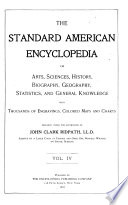 | Robert Stawell Ball - Astronomy - 1885 - 612 pages
...between the mean distance and the periodic time. That relation is stated in the following words : — " The squares of the periodic times are proportional to the cubes of the mean distances." Kepler saw that the different planets had different periodic times ; he also saw that the greater the... | |
 | W. H. Laverty - Dynamics - 1889 - 256 pages
...from 91 to 94 million of miles. But if we take the mean distances, Kepler found by observation that the squares of the periodic times are proportional to the cubes of the mean distances. Therefore so far we have a corroboration of the 2nd law. 137. The 2nd law comes into this problem mainly... | |
 | Frederic Harrison - Biography - 1892 - 674 pages
...distance. But what precisely was the law of this increase 1 After laborious trial he found it to be that the squares of the periodic times are proportional to the cubes of the mean distances. Taking the mean solar distance and the period of the Earth as unity, if, in any other case considered,... | |
 | Frederic Harrison - Biography - 1892 - 890 pages
...distance. But what precisely was the law of this increase ? After laborious trial he found it to be that the squares of the periodic times are proportional to the cubes of the mean distances. Taking the mean solar distance and the period of the Earth as unity, if, in any other case considered,... | |
 | Sir Robert Stawell Ball, Robert Stawell Ball - Sun - 1893 - 422 pages
...referred to the famous law of Kepler, which declares that for planets moving around the same primary the squares of the periodic times are proportional to the cubes of the mean distances. This principle will answer every question regarding the periodic time which the Moon would have it'... | |
 | Walter William Rouse Ball - Mechanics, Analytic - 1893 - 195 pages
...ellipses be described under a central force which varies inversely as the square of the distance, then the squares of the periodic times are proportional to the cubes of the major axes ; to * Kigaud, pp. 16-20; Edleston, Cotes Correspondence, p. 207; see also Brewster, vol.... | |
 | 1896 - 116 pages
...straight line drawn from the planet to the sun passes over equal areas in equal times. Third. That the squares of the periodic times are proportional to the cubes of the mean distances. Kepler, who is one of the chief founders of modern astronomy, deduced these laws governing planetary... | |
 | John Clark Ridpath - Encyclopedias - 1897 - 496 pages
...comparison of the different powers of the numbers which express these distances and times, and he found that the squares of the periodic times are proportional to the cubes of the mean distances from the sun. He considered this the most important of all, and demonstrated it for all the planets then known. It... | |
 | Isaac Newton - Curves, Plane - 1900 - 320 pages
...to the sun's centre are, in the same orbit, proportional to the time of describing them. III. That the squares of the periodic times are proportional to the cubes of the major axes. 219. Kepler's laws, although not rigidly true, are sufficiently near to the truth to have... | |
 | William Woolsey Johnson - Mechanics - 1901 - 480 pages
...sun describes equal areas in equal times. 2. The planets describe ellipses having the sun at a focus. 3. The squares of the periodic times are proportional to the cubes of the mean "distances. Kepler was not possessed of correct notions regarding the nature of motion and force, but we have seen... | |
| |